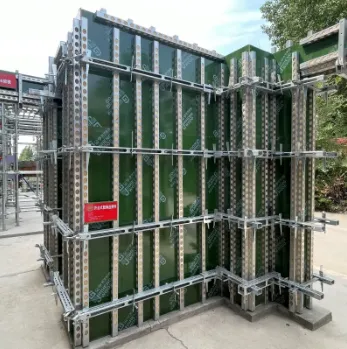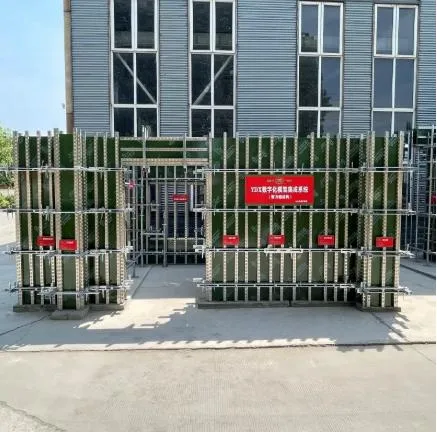
Th1 . 28, 2025 04:30
Back to list
Scaffolding
Aluminium formwork has emerged as a revolutionary technological advancement in the construction industry, offering significant benefits in terms of speed, cost-efficiency, and quality. However, when contemplating its usage, understanding the cost implications is crucial. Let's delve deep into the various aspects influencing the cost of aluminium formwork, ensuring an informed decision for construction projects.
Adaptability and Customization Aluminium formwork systems offer excellent adaptability, aligning with various architectural designs without compromising structural integrity. Although customization could incur additional costs, the ability to mold the formwork to unique project specifications often justifies the expense. This adaptability ensures that each project achieves a high level of precision and quality, potentially minimizing post-construction modifications and associated costs. Efficiency in Construction Rapid construction timelines enabled by aluminium formwork translate into reduced labor and project duration costs. The efficiency stems from the formwork's precise engineering, allowing different building components to be cast in a single pour. Consequently, projects are completed more quickly, reducing the time contractors must be engaged. In a competitive industry landscape, time savings equate to financial savings. Environmental and Sustainability Considerations Aluminium formwork systems also contribute to environmental sustainability, which indirectly influences cost. As green building practices gain prominence globally, the demand for reusable, eco-friendly solutions like aluminium formwork is growing. This preference can lead to incentives or financial benefits for construction companies that prioritize sustainable materials. In addition to reducing waste, a commitment to sustainability can enhance the company's reputation, potentially resulting in increased business opportunities. In conclusion, while the initial cost of aluminium formwork might seem higher than other materials, the long-term savings and benefits outweigh these initial expenses. The ability to reuse, coupled with minimal maintenance needs and enhanced construction efficiency, makes aluminium formwork a prudent choice for projects seeking high-quality, sustainable solutions. As construction demands continue evolving, aluminium formwork stands as a testament to innovative engineering that addresses both economic and environmental considerations efficiently.


Adaptability and Customization Aluminium formwork systems offer excellent adaptability, aligning with various architectural designs without compromising structural integrity. Although customization could incur additional costs, the ability to mold the formwork to unique project specifications often justifies the expense. This adaptability ensures that each project achieves a high level of precision and quality, potentially minimizing post-construction modifications and associated costs. Efficiency in Construction Rapid construction timelines enabled by aluminium formwork translate into reduced labor and project duration costs. The efficiency stems from the formwork's precise engineering, allowing different building components to be cast in a single pour. Consequently, projects are completed more quickly, reducing the time contractors must be engaged. In a competitive industry landscape, time savings equate to financial savings. Environmental and Sustainability Considerations Aluminium formwork systems also contribute to environmental sustainability, which indirectly influences cost. As green building practices gain prominence globally, the demand for reusable, eco-friendly solutions like aluminium formwork is growing. This preference can lead to incentives or financial benefits for construction companies that prioritize sustainable materials. In addition to reducing waste, a commitment to sustainability can enhance the company's reputation, potentially resulting in increased business opportunities. In conclusion, while the initial cost of aluminium formwork might seem higher than other materials, the long-term savings and benefits outweigh these initial expenses. The ability to reuse, coupled with minimal maintenance needs and enhanced construction efficiency, makes aluminium formwork a prudent choice for projects seeking high-quality, sustainable solutions. As construction demands continue evolving, aluminium formwork stands as a testament to innovative engineering that addresses both economic and environmental considerations efficiently.
Share
Latest news
-
The Importance of Reinforcement Bar in ConstructionNewsJul.11,2025
-
The Durability of Timber Steel FurnitureNewsJul.11,2025
-
How to Assemble Fixed Clamp Scaffolding SafelyNewsJul.11,2025
-
Essential Column Rebar Specifications for High-Rise BuildingsNewsJul.11,2025
-
Common Applications of Steel Keels in ConstructionNewsJul.11,2025
-
Benefits of Using Aluminum Scaffolding Ladders Over SteelNewsJul.11,2025
-
Stainless Steel Keel: Analysis of the Triple Advantages of Rigidity, Stability, and LightweightNewsJun.19,2025
Related Products










